Alternate segment theorem
Categories: gcse geometry circle geometry
Level:

The alternate segment theorem is probably the trickiest of the circle theorems, so it is worth studying the diagram and description carefully to be sure you properly understand it. If you are unsure about terms like chord or segment, see this article.
Alternate segment theorem
The theorem says the angle between a tangent and a chord is equal to the angle in the opposite segment. What exactly does that mean? It helps to break this down into these two diagrams:
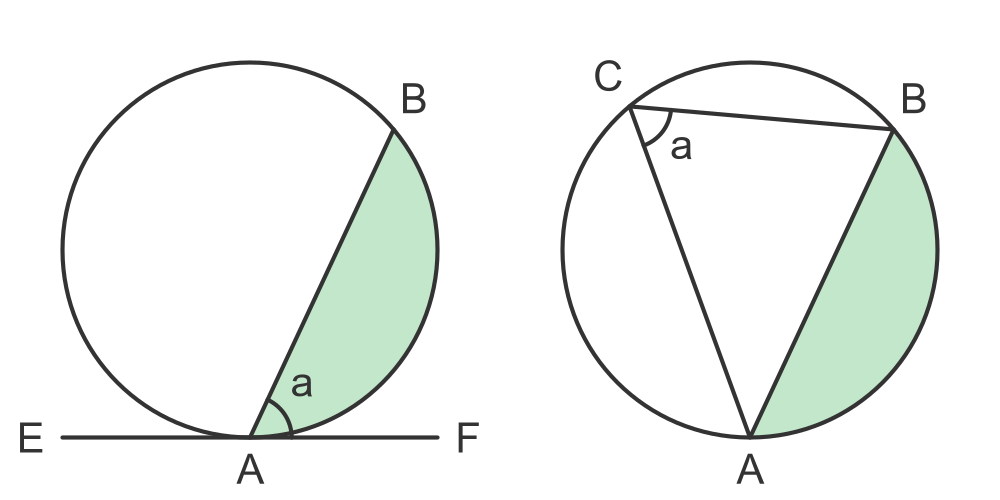
The diagram on the left shows a circle with a chord AB. It also shows a tangent EF that touches the circle at A. The chord divides the circle into two segments. The segment on the lower, right side of the circle is coloured in green - this is the segment we are interested in.
The angle between the tangent and the chord, angle BAF on the green side of the chord, has value a.
The circle on the right shows the same circle, with the same chord AB. This time we have drawn lines from the ends of the chord (points A and B) to some point C on the circumference.
We call the angle ACB the angle in the segment created by the chord AB. But the angle is in the white part of the circle, which is the opposite segment to the green part.
The alternate segment theorem states that the angle ACB is also equal to a. In other words, the angle between the tangent and the chord is equal to the angle in the opposite segment.
Swapping segments
This diagram shows the same chord AB, but this time we have shaded the upper left segment in yellow:
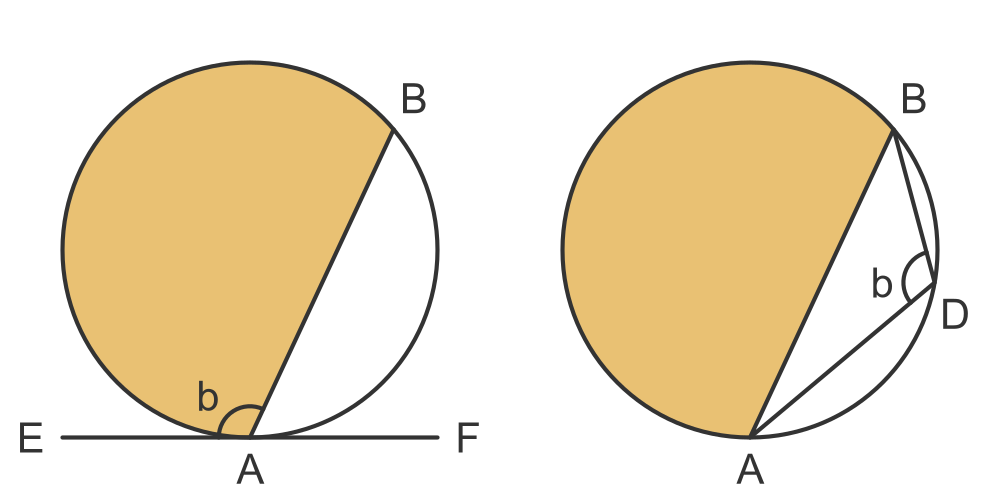
This time we are interested in the angle BAE, which has value b (the circle on the left in the diagram).
The angle in the opposite segment (shown on the right), angle ADB, also has value b according to the theorem.
Relationship to other theorems
The theorem that the opposite angles in a cyclic quadrilateral add up to 180° follows from the alternate segment theorem. To see how let's combine the two diagrams above:
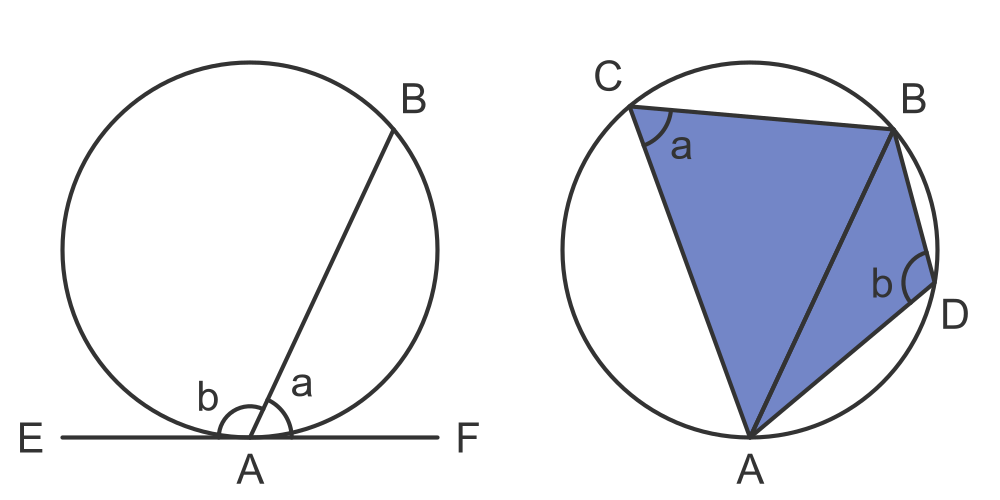
The circle on the left shows the chord AB and the tangent at EF. It also shows our two angles, a and b from the previous examples.
Since a and b are two angles on a line, it follows that a + b = 180°.
The circle on the right shows the chord AB and the two points C and D from the earlier examples. The points ABCD form a quadrilateral. And since all four points are on the same circle, ABCD is a cyclic quadrilateral.
The angles at the two vertices C and D have values a and b. We know that a and b must always add to 180°, so the opposite angles of a cyclic quadrilateral add up to 180°. Of course, this only proves that it is true for one pair of opposite angles, a and b. But we also know that the four angles in a quadrilateral add up to 360°, so if any two angles add up to 180°, the other two must also add up to 180°.
So the cyclic quadrilateral theorem follows from the alternate segment theorem.
The theorem that the angle in a semicircle is a right angle is also related to the alternate segment theorem. Here is our original diagram, drawn for the special case where the chord AB passes through the centre of the circle, O:
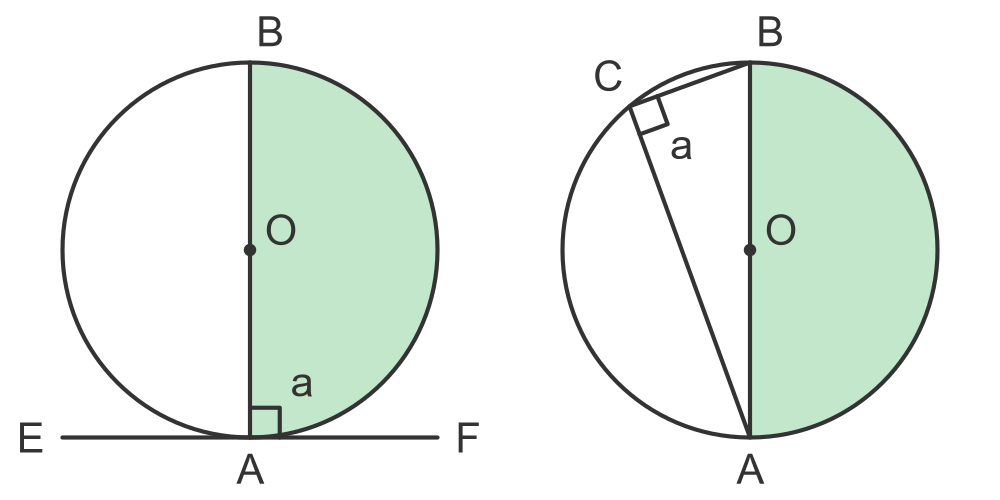
Looking at the circle on the left, since the chord AB passes through the centre, it follows that AB is a diameter of the circle, and OA is a radius of the circle (any line from the centre of a circle to its circumference is a radius).
We know that a radius and a tangent meet at a right angle, so it follows that angle a is a right angle.
The circle on the right shows the angle in the opposite segment. According to the alternate segment theorem this angle must also be a right angle. In other words, if AB is a diameter then the angle in the segment is a right angle.
But when AB is a diameter, the segment is a semicircle. So the angle in a semicircle theorem is just a special case of the alternate segment theorem.
Proof
This is quite a long proof but it isn't difficult if we take it step by step.
Here is our original diagram, showing the angle between the tangent and the chord as x, and the angle in the opposite segment as y. We wish to prove that x and y are the same angle:
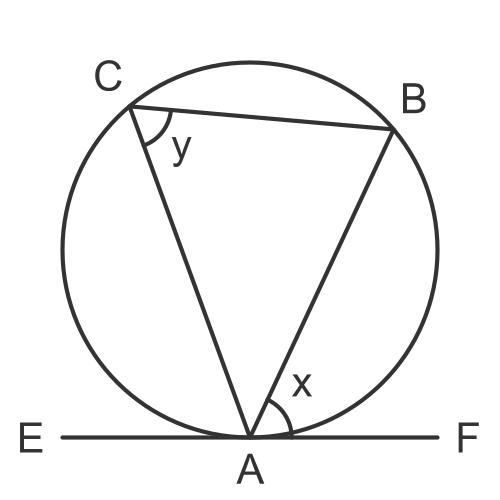
We will start by drawing a triangle OAB, where O is the centre of the circle:
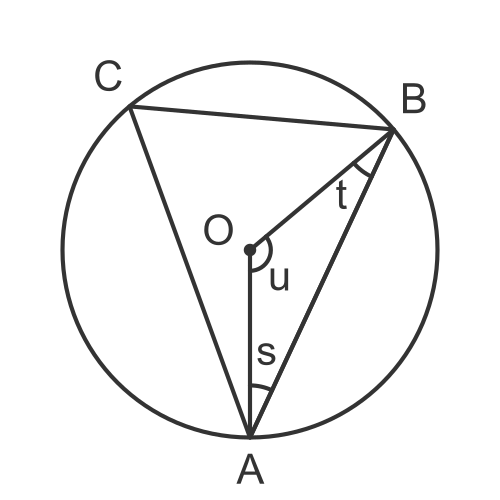
What do we know about this circle? Well, we know that OA and OB are both radii of the circle (because they are both lines from the centre to the circumference). This means that OA and OB are both the same length.
For a triangle with two equal sides, the angles opposite those two sides are equal. This means that s and t are equal. And since the three angles in triangle OAB add up to 180° we can say:

Rearranging this gives:
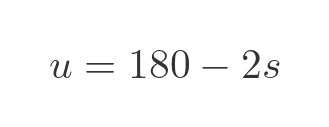
We can then take out a common factor of 2, giving a formula that we will use later:
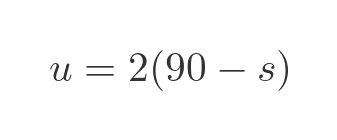
Now let's look at angles x and s:
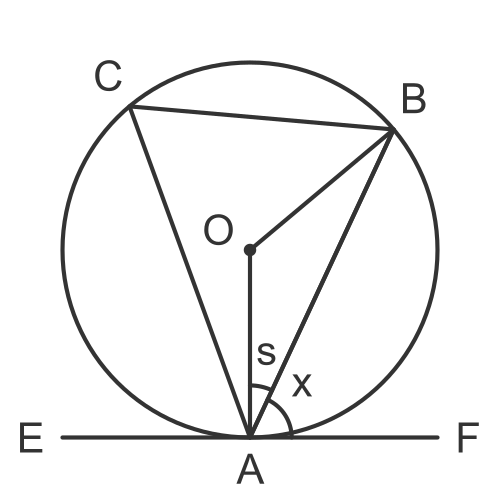
We know that OA is a radius, and EF is a tangent, and they meet at A. Since a radius and a tangent always meet at a right angle, we know that the angle OAF is a right angle. But that angle is the sum of x and s, so we have:
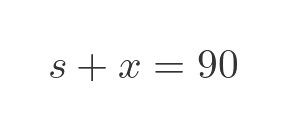
We can rearrange this formula to find x:
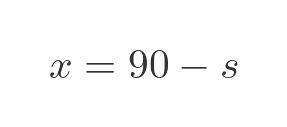
Looking back at our previous formula for u:

We can see that:
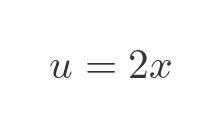
Finally, let's look at the relationship between u and y:
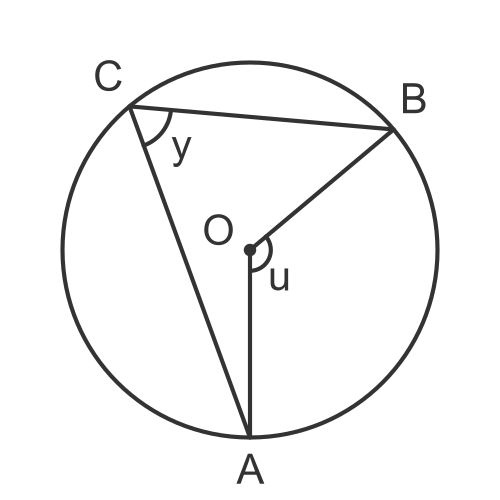
You might recognize this diagram from the rule that the angle at the centre of a circle is twice the angle at the circumference, In this case, u is the angle at the centre and y is the angle at the circumference, so we have:
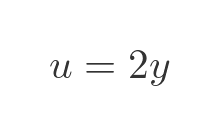
But we previously proved that u is equal to 2x, so we have:
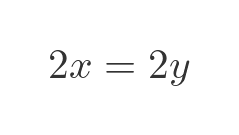
This proves that y equals x, which proves the theorem.
Related articles
- Parts of a circle
- Perpendicular bisector of chord theorem
- Angle at the centre of a circle is twice the angle at the circumference
- Angle in a semicircle is 90°
- Angles in the same segment of a circle are equal
- Opposite angles in a cyclic quadrilateral add up to 180°
- Tangent and radius of a circle meet at 90°
- Two tangents from a point have equal length
- Two radii form an isosceles triangle
Join the GraphicMaths Newsletter
Sign up using this form to receive an email when new content is added to the graphpicmaths or pythoninformer websites:

Popular tags
adder adjacency matrix alu and gate angle answers area argand diagram binary maths cardioid cartesian equation chain rule chord circle cofactor combinations complex modulus complex numbers complex polygon complex power complex root cosh cosine cosine rule countable cpu cube decagon demorgans law derivative determinant diagonal directrix dodecagon e eigenvalue eigenvector ellipse equilateral triangle erf function euclid euler eulers formula eulers identity exercises exponent exponential exterior angle first principles flip-flop focus gabriels horn galileo gamma function gaussian distribution gradient graph hendecagon heptagon heron hexagon hilbert horizontal hyperbola hyperbolic function hyperbolic functions infinity integration integration by parts integration by substitution interior angle inverse function inverse hyperbolic function inverse matrix irrational irrational number irregular polygon isomorphic graph isosceles trapezium isosceles triangle kite koch curve l system lhopitals rule limit line integral locus logarithm maclaurin series major axis matrix matrix algebra mean minor axis n choose r nand gate net newton raphson method nonagon nor gate normal normal distribution not gate octagon or gate parabola parallelogram parametric equation pentagon perimeter permutation matrix permutations pi pi function polar coordinates polynomial power probability probability distribution product rule proof pythagoras proof quadrilateral questions quotient rule radians radius rectangle regular polygon rhombus root sech segment set set-reset flip-flop simpsons rule sine sine rule sinh slope sloping lines solving equations solving triangles square square root squeeze theorem standard curves standard deviation star polygon statistics straight line graphs surface of revolution symmetry tangent tanh transformation transformations translation trapezium triangle turtle graphics uncountable variance vertical volume volume of revolution xnor gate xor gate